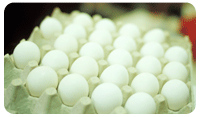|
|
|
|
 |
|
|
 |
17번:복수 지시 대명사 (의문문) - 지시대명사와 의문문
|
 |
|
|
무제 문서
|
 |
 |
|
 |
|
수업을 시작하기 전에, 다음 표현들을 활용하여 선생님과 간단히 인사를 나누어 보세요. |
| Before starting today’s lesson, greet your student first, using the expressions below. |
|
 |
|
|
 |
| 1) How are you doing? 안녕하세요? |
| 2) Good, thank you. And you? 좋아요. 감사합니다. 당신은 어떠세요? |
|
 |
|
|
 |
|
|
 |
 |
|
 |
|
다음은 오늘 수업에서 배울 내용들입니다. 강사님의 지시에 따라 함께 발음 연습을
하면서 그 뜻을 익혀보세요.“Repeat after me”라는 말이 나오면, 강사님의 말을 따라 하세요. 4번 반복하게 됩니다. |
Help your student learn today’s expressions below by letting him or her repeat after you
four times. |
|
 |
|
|
 |
| 주제: 사물의 지칭 (Topic: Use of These, Those and They) |
|
Are
(입니까?) |
these
(이것은) |
bananas? (바나나) |
| pencils? (연필) |
those
(저것은) |
dogs? (개) |
| apples? (사과) |
they
(그것은) |
elephants? (코끼리) |
| eggs? (달걀) |
|
| |
| Yes, |
they |
are. (네, 그렇습니다.) |
| No, |
they |
are not. (아니오, 그렇지 않습니다.) |
|
|
 |
|
|
 |
|
|
 |
 |
|
 |
|
다음은 오늘 수업에서 배운 내용이 실제 어떻게 대화에서 사용되는지 연습해 보도록 합니다. 강사님이 대화를 시작한 이후, 본인의 차례에 맞는 대화를 만들어 보세요. 대화가 끝나면 역할을 바꾸어 연습해보세요. |
| Use role-playing to help your student practice what he or she learned today. You will play Tom in the dialogue below. Later, change roles with your student and try the dialogue again. |
|
 |
|
|
 |
| 상황 (Situation) |
: 친구의 질문에 짧게 대답해 봅니다.
(The situation is that your student answers the questions. ) |
|
Tom: Are these _________ ?
_____ : Yes, ___________.
Tom: Are those ____________?
_____ : No, ________. Those are _______ .
Tom: Are they __________ ?
_____ : No, ________. They are ________.? |
 |
|
 |
|
|
 |
|
|
|
|
 |
 |
|
 |
|
오늘의 수업이 끝났습니다. 수업을 끝내기 전에, 강사님께서 오늘 배운 내용에 관해 몇 가지 질문을 하시면 이에 답해 보세요. 그리고, 강사님께 작별 인사를 아래 표현을 이용해서 해보세요. |
Review today’s lesson by doing a little quiz with three or four questions as a round-up.
And then, close today’s lesson by using the expressions below. |
|
 |
|
|
 |
| 1) Thank you 감사합니다. |
| 2) Have a nice day 좋은 하루 보내세요. |
|
 |
|
|
 |
|
|
|
|
|
| |
|
|
 |
|
|
|
|
|
|